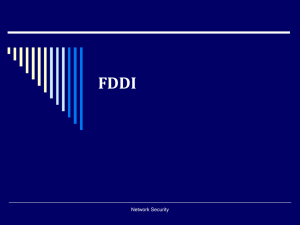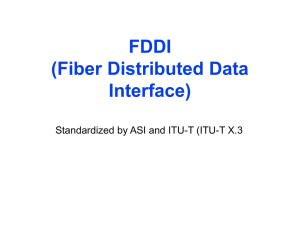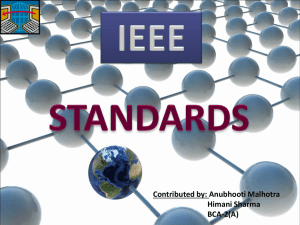lecture4 - The Institute of Finance Management
advertisement
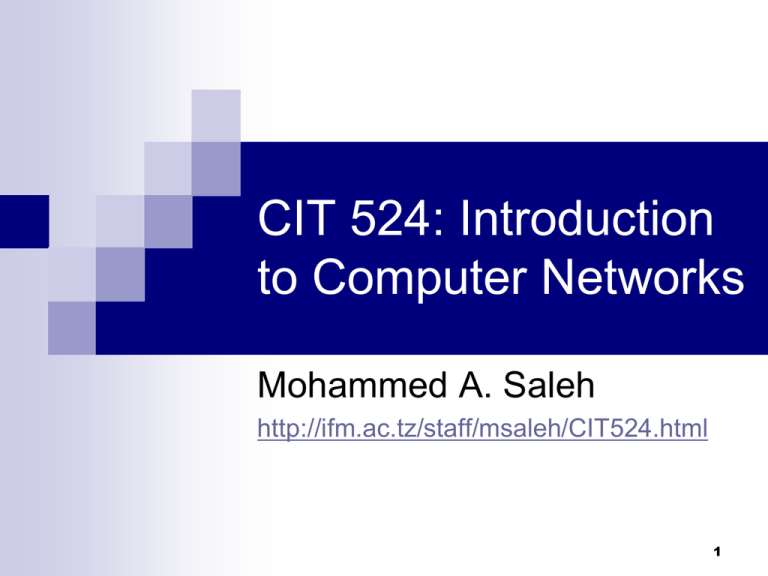
CIT 524: Introduction to Computer Networks Mohammed A. Saleh http://ifm.ac.tz/staff/msaleh/CIT524.html 1 IEEE and Networking Standards The Institute of Electrical and Electronic Engineers (IEEE) developed a series of networking standards. to ensure that networking technologies developed by respective manufacturers are compatible. cabling, networking devices, and protocols are all interchangeable when designed under the banner of a specific IEEE standard. Each of these IEEE specifications outlines specific characteristics for LAN networking including: the speed Topology Cabling and Access method 2 IEEE 802 Networking Standards Specificatio n Name 802.1 Internetworking 802.2 The Logical Link Control Sublayer 802.3 CSMA/CD (Carrier Sense Multiple Access with Collision Detection) for Ethernet Networks 802.4 A token passing bus 802.5 Token Ring Networks 802.6 Metropolitan Area Network 802.7 Broadband Technical Advisory Group 802.8 Fiber-optic Technical Advisory Group 3 802.2 IEEE Standard Referred to as the Logical Link Control (LLC) Manages data flow control and error control for the other IEEE LAN standards. Data flow control regulates how much data can be transmitted in a certain amount of time Error control refers to the recognition and notification of damaged data. 4 802.3 IEEE Standard Defines the characteristics for Ethernet networks. Ethernet networking is by far the most widely implemented form of local area networking . Since the development of the original 802.3 standards, there have also been several additions that have been assigned new designators. These standards are often referred to as the 802.3x standards Some of the newer standards include: 802.3u for Fast Ethernet 802.3z for Gigabit Ethernet 802.3ae for 10-Gigabit Ethernet 5 Features of IEEE 802.3 Speed The original IEEE 802.3 standard specified a network transfer rate of 10Mbps Modifications to the standard led to: Fast Ethernet (802.3u), which can transmit network data up to 100Mbps and higher. Gigabit Ethernet (802.3z), which can transmit at speeds up to 1000Mbps. 802.3ae is a very fast 803.3 standard. Known as 10-Gigabit Ethernet, it offers speeds 10 times that of Gigabit Ethernet. Topology The original Ethernet networks used a bus or star topology IEEE 802.3u and 802.3z use the star topology. 6 Cont … Media Refers to the physical cabling used to transmit the signal around the network The original 802.3 specifications identified coaxial and twisted pair cabling to be used The more modern standards specify twisted pair and fiber-optic cable 802.3ae currently only supports fiber media. Access method The access method refers to the way that the network media is accessed Ethernet networks use a system called Carrier Sense Multiple Access with Collision Detection (CSMA/CD). 7 Cont … CSMA/CD works by monitoring the computers that are sending data on the network. If two computers transmit data at the same time, a data collision will occur. To prevent collisions, the systems sending the data will be required to wait a period of time and then retransmit the data to avoid the collision. 10-Gigbit Ethernet only operates in full-duplex mode and, as such, does not need to use the traditional Ethernet CSMA/CD access method 8 802.5 IEEE Standard This standard specifies the characteristics for Token Ring networks. Developed by IBM in the mid 80’s replaced by the Ethernet networks. It is unlikely that you will encounter a ring network in your travels and even more unlikely that you will be implementing a ring network as a new installation. 9 Features of IEEE 802.5 Speed Topology Token Ring networks use a logical ring topology and most often a physical star Media The 802.5 Token Ring specifies network speeds of 4 and 16Mbps. Token Ring networks use unshielded twisted pair cabling or shielded twisted pair. Access Method specifies an access method known as token passing On a Token Ring network, only one computer at a time can transmit data 10 Cont … When a computer has data to send, it must use a special type of packet known as a token The token travels around the network looking for computers with data to send The computer's data is passed along with the token until it gets to the destination computer at which point, the data is removed from the token and the empty token placed back on the ring. 11 Fiber Distributed Data Interface The American National Standards Institute (ANSI) developed the Fiber Distributed Data Interface (FDDI) standard It was developed to meet the growing need for a reliable and fast networking system to accommodate distributed applications. FDDI uses a ring network design unlike the traditional 802.5 standard, FDDI uses a dual ring technology for fault tolerance Because of the dual ring design, FDDI is not susceptible to a single cable failure like the regular 802.5 IEEE standard 12 Cont … 13 Features of IEEE FDDI Speed Topology FDDI uses a dual ring topology for fault-tolerant reasons. Media FDDI transmits data at 100Mbps and higher. FDDI uses fiber-optic cable that enables data transmissions that exceed two kilometer Access Method Similar to 802.5, FDDI uses a token-passing access method. 14 IEEE 802.11 Standard Specify the characteristics of wireless LAN Ethernet networks There are four common wireless standards: 802.11, 802.11a, 802.11b and 802.11g Each of these wireless standards characteristics identifies several Features of 802.11 Speed Media measured in Mbps and vary between network standards. use radio frequency (RF) as a transmission media Topology wireless standards can be implemented in an ad-hoc or 15 infrastructure topology IEEE 802.11 Standard Access Methods Uses Carrier Sense Multiple Access/Collision Avoidance (CSMA/CA). Variation on the CSMA/CD access method CSMA/CA access method uses a "listen before talking" strategy Any system wanting to transmit data must first verify that the channel is clear before transmitting, thereby avoiding potential collisions. Range Wireless standards each specify a transmission range It is influenced by many factors such as obstacles or weather. 16 Cont … IEEE 802.11offered 1 or 2Mbps transmission speeds 802.11a specified speeds of up to 54Mbps IEEE 802.11b The 802.11b standard provides for a maximum transmission speed of 11Mbps 17 Quiz 1. 2. 3. How would you differentiate Fast Ethernet from Gigabit Ethernet? What are there network standards. List the four main features in Ethernet standards? Differentiate between CSMA/CD and CSMA/CA. What do the acronyms stand for? 18 Questions
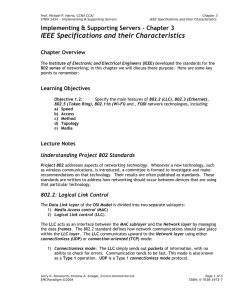
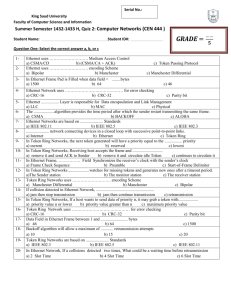

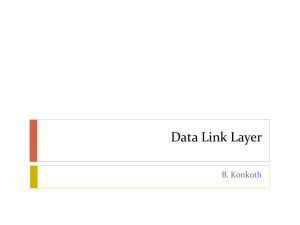
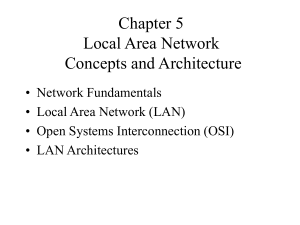

![MCS 1353 & MCS 0253 [12]](http://s2.studylib.net/store/data/009897203_1-434cebd0013e668200dda0a8a1da20da-300x300.png)

